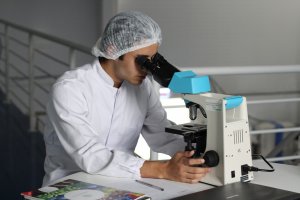Life is still far from normal… Government measures to encourage social isolation have minimised the effect of Covid-19 in much of the world, however, it is here to stay
Over the past few months, our lives have been changed in previously unimaginable ways—we have been ushered into confinement, had out travel plans cancelled, and forced to acquire strange new habits. All at the hands of a 120 nanometre (0.00012 mm) virus. How did something so small have such a global impact? Incredibly, this is one of the major issues still under discussion, as it is directly linked to the mode of transmission. This uncertainly is indicative of the current situation; we have many questions, but only a few answers.
 Covid-19’s agent, SARS-Cov-2, is a Coronavirideae. We, humans, are usually infected with at least four types of coronavirus without serious consequence. However, three mutant variants can cause serious problems: MERS, SARS and the current SARS-Cov-2. These viruses mainly infect the lungs, which leads to a cough, bouts of fever and general shortness of breath. Currently, we know that the key to case severity is directly related to the inflammatory response to the infection. This, as we have seen, can lead to death.
Covid-19’s agent, SARS-Cov-2, is a Coronavirideae. We, humans, are usually infected with at least four types of coronavirus without serious consequence. However, three mutant variants can cause serious problems: MERS, SARS and the current SARS-Cov-2. These viruses mainly infect the lungs, which leads to a cough, bouts of fever and general shortness of breath. Currently, we know that the key to case severity is directly related to the inflammatory response to the infection. This, as we have seen, can lead to death.
What can we do as individuals? The answer is quite simple: avoid contact with others. We know that this is the main cause of transmission. Therefore, staying at home, avoiding enclosed places and, in particular, crowds all help mitigate risk. To further reduce the chance of potential contraction, there are several habits that we have learnt to internalise during this period of uncertainty. The frequent and careful cleaning of both our hands and objects we come in touch with, the use of sanitiser (at least 70% alcohol), and the use of facemasks have become part of our daily lives.
 Today, a person who is hospitalised as a result of contracting Covid-19 has a significantly greater chance of survival than months ago thanks to the improvement in patient care and management techniques (demonstrated by the research into the use of dexamethasone by the University of Oxford). However, tests with other drugs for use in both hospitals and mild cases have not yet yielded conclusive results.
Today, a person who is hospitalised as a result of contracting Covid-19 has a significantly greater chance of survival than months ago thanks to the improvement in patient care and management techniques (demonstrated by the research into the use of dexamethasone by the University of Oxford). However, tests with other drugs for use in both hospitals and mild cases have not yet yielded conclusive results.
Fortunately, though, it is very likely that we will have a vaccine ready for general circulation at some point in 2021. Currently, we have 155 vaccines undergoing clinical tests, 22 of which are already in the trial phase, four of which are already in the final phase of this process (one from the University of Oxford/AstraZeneca—AstraZeneca is a pharmaceutical conglomerate created by the merger of the Swedish company Astra AB and the British Zeneca Group). By the time these vaccines are approved, there will likely be a large effort to vaccinate staggering numbers of the population in a relatively short time period.
Looking after yourself right is of critical importance because, even though we know how to better manage the virus now, only a vaccine can defeat it.
Only then will we be able to breathe a sigh of relief, without a mask.

















